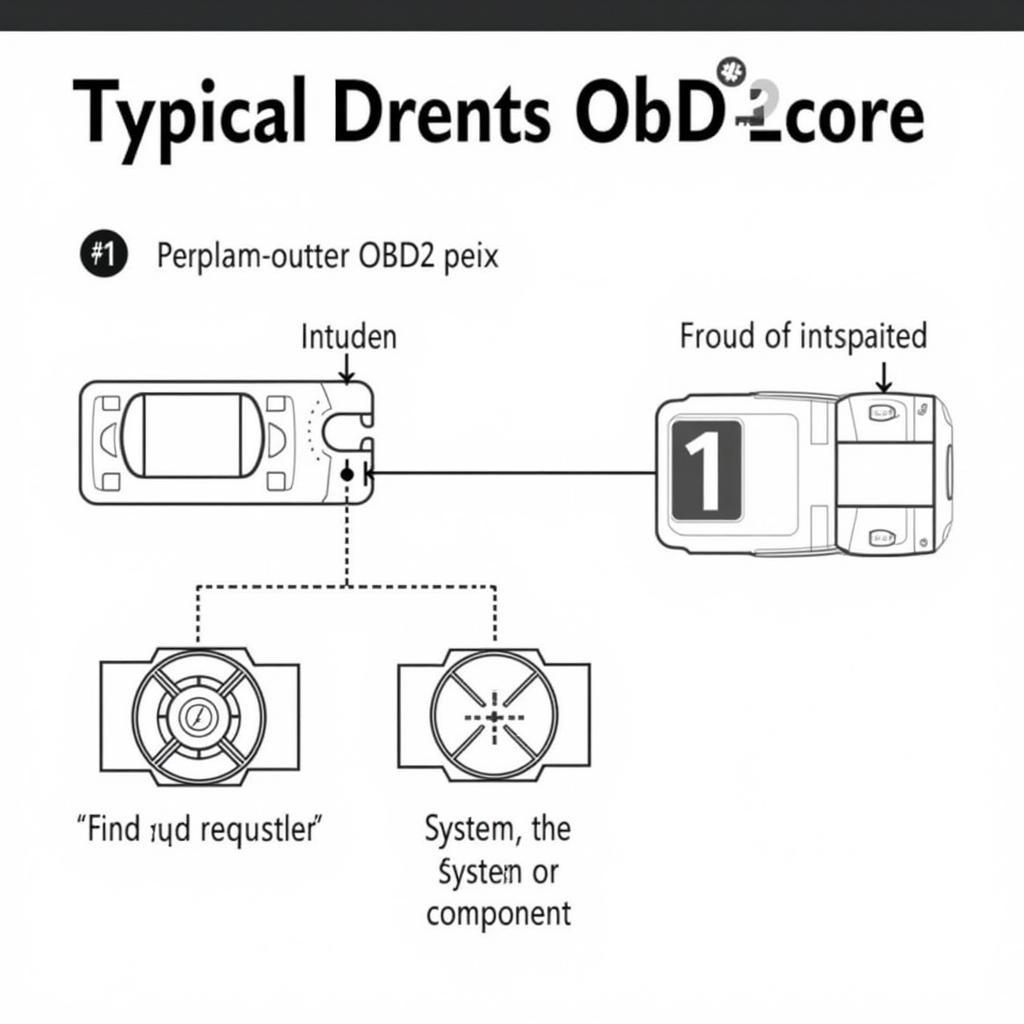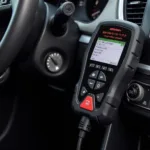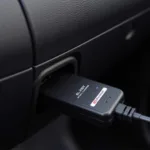OBD2, or On-Board Diagnostics, is a vehicle’s self-diagnostic system that uses a standardized set of codes to communicate problems. Understanding these codes, commonly referred to as an “obd2 code chart,” is crucial for anyone who wants to diagnose and fix car issues themselves or simply understand what’s going on under the hood.
What is an OBD2 Code Chart?
An OBD2 code chart is essentially a dictionary for your car’s diagnostic system. It lists thousands of standardized codes, each representing a specific problem that the onboard computer has detected. Each code consists of a five-digit alphanumeric sequence, starting with a letter and followed by four numbers.
For example, the code “P0301” indicates a misfire detected in cylinder 1. The “P” stands for “Powertrain,” indicating an issue related to the engine or transmission. The following numbers pinpoint the specific nature of the problem within that system.
How to Read an OBD2 Code Chart
While the codes themselves may seem cryptic, deciphering them becomes straightforward with a reliable obd2 code chart. You can find these charts online, in automotive repair manuals, or within dedicated OBD2 scanner apps.
To understand a code, focus on each component:
-
The First Letter: This broadly identifies the system affected:
- P: Powertrain (engine, transmission, emissions)
- B: Body (airbags, power seats, central locking)
- C: Chassis (ABS, traction control, suspension)
- U: Network & Communication (CAN bus, modules)
-
The First Number: This further categorizes the code:
- 0: Standardized code (SAE – Society of Automotive Engineers)
- 1: Manufacturer-specific code
-
The Second Number: This pinpoints the specific subsystem or component within the broader category.
-
The Last Two Numbers: These identify the very specific problem or fault within the subsystem.
Why is an OBD2 Code Chart Important?
Knowing how to interpret an obd2 code chart empowers you to:
- Diagnose Car Problems: Whether you’re a DIY mechanic or prefer taking your car to a professional, understanding the codes gives you a head start on identifying the problem.
- Save Money: By understanding the issue, you can avoid unnecessary repairs or get a better idea of the repair costs beforehand.
- Communicate Effectively with Mechanics: You can discuss the problem with your mechanic more knowledgeably and ensure you’re both on the same page.
- Monitor Your Car’s Health: By regularly checking for codes, you can catch potential issues early on and prevent more serious problems down the line.
Common OBD2 Codes and Their Meanings
Here are a few examples of frequently encountered OBD2 codes:
-
P0420: Catalyst System Efficiency Below Threshold (Bank 1) – This code typically indicates a problem with the catalytic converter.
-
P0171: System Too Lean (Bank 1) – This suggests the engine is running lean, meaning there’s too much air compared to fuel.
-
P0300: Random/Multiple Cylinder Misfire Detected – This indicates a general misfire issue affecting multiple cylinders.
-
P0101: Mass Air Flow (MAF) Sensor Circuit Range/Performance Problem – This points to an issue with the mass air flow sensor, which measures the amount of air entering the engine.
OBD2 Code Chart and Your Car Maintenance
Incorporating an obd2 code chart into your car maintenance routine can be immensely beneficial. Here’s how:
- Invest in an OBD2 Scanner: A basic OBD2 scanner can be purchased at a relatively low cost, allowing you to read and clear codes yourself.
- Check out our article on where to buy obd2 elm327 for guidance on choosing the right scanner.
- Regularly Check for Codes: Even if your car seems to be running fine, periodically scanning for codes can help detect issues early on.
- Don’t Panic When You See a Code: While a code indicates a problem, it doesn’t always mean an expensive repair is imminent. Research the code, understand its potential causes, and then decide on the best course of action.
Beyond the OBD2 Code Chart: Further Resources
Remember, an obd2 code chart is just the starting point. If you encounter a code, further research is usually required to pinpoint the exact cause and solution. Here are some additional resources:
- Online Forums: Automotive forums specific to your car make and model can be invaluable sources of information and advice from fellow car owners.
- Repair Manuals: A comprehensive repair manual for your vehicle can provide detailed troubleshooting guides, wiring diagrams, and other useful information.
- Professional Mechanics: When in doubt, consult with a qualified mechanic, especially for complex issues or repairs requiring specialized tools and knowledge.
Conclusion
An obd2 code chart serves as an essential tool for anyone who wants to understand their car’s health better. By learning how to interpret these codes, you can become a more informed car owner, save money on repairs, and ensure your vehicle stays in top condition. While an OBD2 code chart provides valuable insights, it’s crucial to remember that it’s only the first step in the diagnostic process. Further research and, if needed, professional help might be necessary to fully understand and address the underlying issue.
For a deeper understanding of specific OBD2 codes, you can explore our comprehensive obd2 fault codes section.


